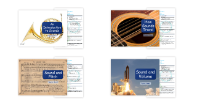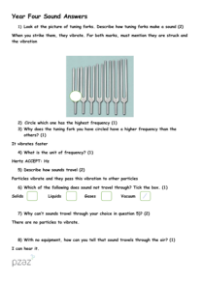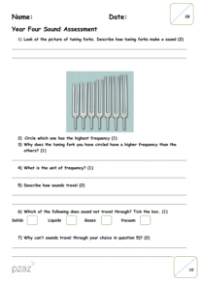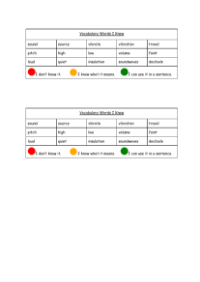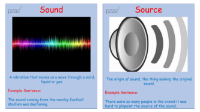Sound - Knowledge Organisers
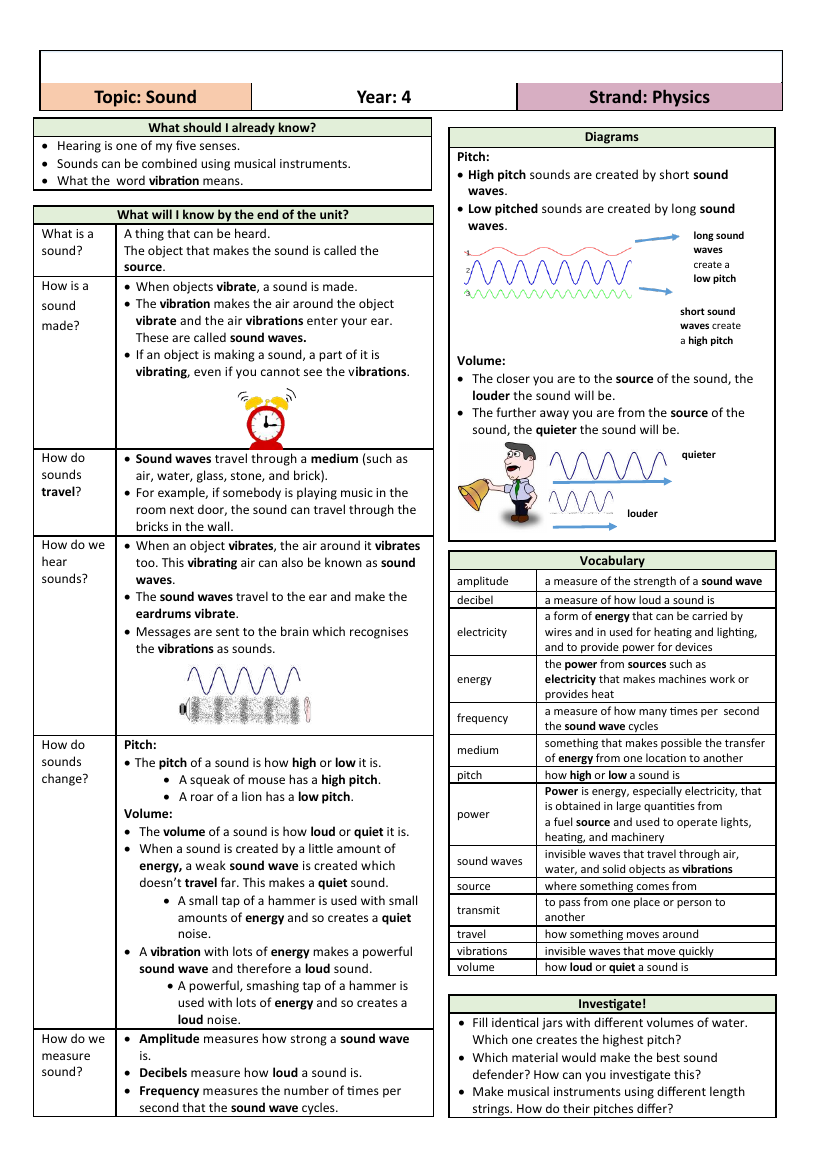
Science Resource Description
In this engaging unit on sound for Year 4 students, children will build on their pre-existing knowledge about one of their five senses, hearing, and the role of vibrations in creating sound. Initially, they will understand that sound is something that can be heard and that the object creating the sound is referred to as the source. Throughout the unit, students will learn that sounds are produced when objects vibrate, causing the surrounding air to vibrate as well, which in turn produces sound waves that enter our ears. They will explore the concept that for a sound to be made, there must be a vibration, even if it is not visible to the naked eye.
As the unit progresses, pupils will delve into the mechanics of sound travel, discovering that sound waves can move through various mediums, including air, water, and solid materials like glass and stone. They will gain an understanding of how we hear sounds, with vibrating objects causing our eardrums to vibrate and our brains to interpret these vibrations as sounds. The concept of sound change is also covered, with explanations of pitch and volume, and how factors such as energy affect the loudness of a sound. Students will learn to measure sound using amplitude, decibels, and frequency, and will investigate these concepts through practical experiments. By the end of the unit, they will have a comprehensive understanding of sound, including how it is created, how it travels, and the various factors that influence its properties.

